Suchergebnisse für "Factsheet%3A Energietechnologien gestalten%2C die f%C3%BCr alle sinnvoll und nutzbar sind"
homeVALUE

The ecology and economy of housing. An assessment system for the evaluation of the suitability of buildings and housing estates for the future.
IEA SHC Task 66 Solar Energy Buildings - Industry Workshop
29. September 2022
Kassel, DE
Solar thermal and/or PVT combined with heat pump as a future CO2-neutral energy supply concept
IEA TASK 38 "Solar Air Conditioning and Refrigeration" des Implementing Agreements on Solar Heating and Cooling
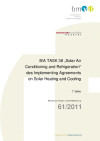
Schriftenreihe
61/2011
T. Selke
Herausgeber: BMVIT
Deutsch, 294 Seiten
Downloads zur Publikation
IEA SHC Webinar on Renovating Historic Buildings Towards Zero Energy
28. January 2020, 12.00 - 13.30 GMT
Online
Real-world renovation experiences from the perspective of building owners, design teams and SHC Task 59 experts will be presented and discussed.
INSPIRED Regions: Beitrag von intelligenten Stromnetzen zur Stärkung der wirtschaftlichen Entwicklung ländlicher Regionen
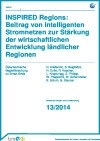
Österreichische Begleitforschung zu Smart Grids
Schriftenreihe
13/2014
H. Aliefendic, S. Beiglböck
Herausgeber: BMVIT
Deutsch, 81 Seiten
Downloads zur Publikation
Product service systems without risk (RISP)
In RISP a process model for the development of product-services is worked out, which consists of seven steps and so called "gates" between the single steps. The questions which have to be answered before entering the gates to the next step are derived from a failure mode and the effect analysis of the single steps.
MehrWertStrom 2030 - PV-Community system - Exploring a participatory pilot project with regional added value for structurally weak regions
The "MehrWertStrom 2030" project analysed the legal, technical, organizational and economic feasibility of PV community joint venture facilities on multi-party buildings including the added value for structurally weak regions and developed innovative solutions related to organization, financing and realization.
Spatial Energy Planning for Smart City Quarters and Smart Regions
In the project ERP_hoch3 energy related policy research in three Austrian agglomerations (Vienna – Lower Austria, Graz – Styria and Vorderland-Feldkirch) has been done, scenarios of the current state and the target state have been modelled and calculated. The aim was to develop generic transferable recommendations for spatial energy planning in agglomerations.
SchulRen+ Innovative plus-energy refurbishment concepts for school buildings
In a technical feasibility study and based on a real example, the project analysed innovative plus-energy refurbishment concepts for school buildings. The goal was to develop refurbishment concepts with a high replication potential which combine future-oriented energy concepts with feasible technical and architectural solutions.
SURO - The urban underground as mine? Potential of secondary resources in subsurface infrastructure systems
Feasibility of a resource cadaster to inventorize, characterize and locate material stocks in subsurface infrastructure networks. The results are used for the economic assessment of secondary resource potentials.
Development of low emission cleaning processes for metal surfaces considering manufacturing processes within the automotive industry
Development of technological optimisation of cleaning processes within the automotive industry which guarantee defined cleaning requirements and fulfil the criteria of a sustainable process design with near zero emissions.
Transfer of technology and know-how for the initiation of fermentation gas net feed-in pilot projects.
Target group communication of the technical possibilities of fermentation gas net feed-in. Information preparation and reduction in planning complexity. Support and networking of potential future plant operators. Establishing a service office as contact point.
CIT City in Transition - A Model for Comprehensive Renewal Processes to Increase the Value of Urban Areas

By means of pilot projects in two urban areas comprehensive goals and criteria, assessment approaches and a code of practice for sustainable urban renewal are elaborated jointly with decision makers and experts in urban development.
Legal, economical and technical preconditions for the feed-in of biogas into the Austrian natural gas grid
Legal, economical and technical preconditions for a successful introduction and market development of fermentation gas feed-in to the Austrian natural gas grid. Appropriate legal and financial support regulations. Calculation basis for demonstration plants.
Anergy2Plus - Demonstration and expansion of an anergy network as part of a holistic energy concept and plus energy quarter
The overall objective of the project is to pursue and demonstrate a holistic approach to the design, construction and ultimately the use of the residential quarter in the context of energy supply. Especially in the area of thermal energy supply, a project with lighthouse character on the way to a plus-energy quarter is to be created by demonstrating the innovative supply concept based on an anergy network.
Solarunterstützte Wärmenetze
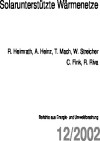
Schriftenreihe
12/2002
W. Streicher
Deutsch, 234 Seiten
Downloads zur Publikation
Wirtschaftsfaktor Sonnenenergie
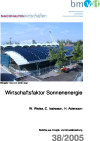
Schriftenreihe
38/2005
W. Weiss, C. Isaksson, H. Adensam
Deutsch, 84 Seiten
Downloads zur Publikation
Passivhaus Schulungunterlagen

Schriftenreihe
02/2007
P. Holzer
Herausgeber: BMVIT
Deutsch, 60 Seiten
Downloads zur Publikation
Ausbildungsoffensive Komfortlüftung
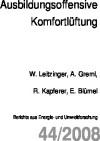
Schriftenreihe
44/2008
W. Leitzinger, A. Greml, R. Kapferer, E. Blümel
Deutsch, 89 Seiten
Downloads zur Publikation
Behagliche Nachhaltigkeit
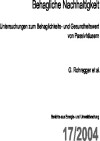
Schriftenreihe
17/2004
G. Rohregger
Deutsch, 148 Seiten
